Text
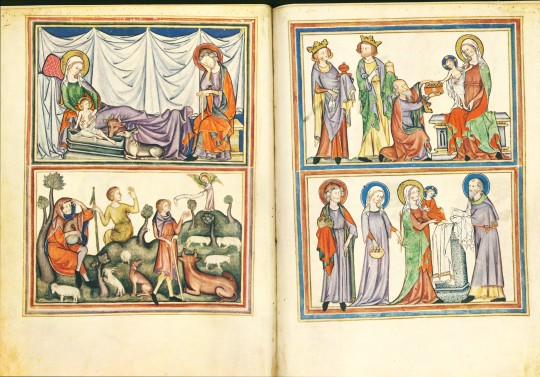
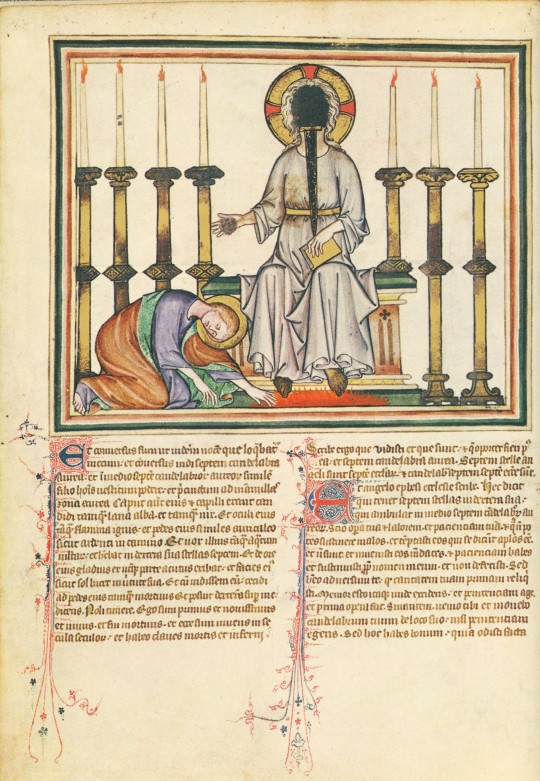



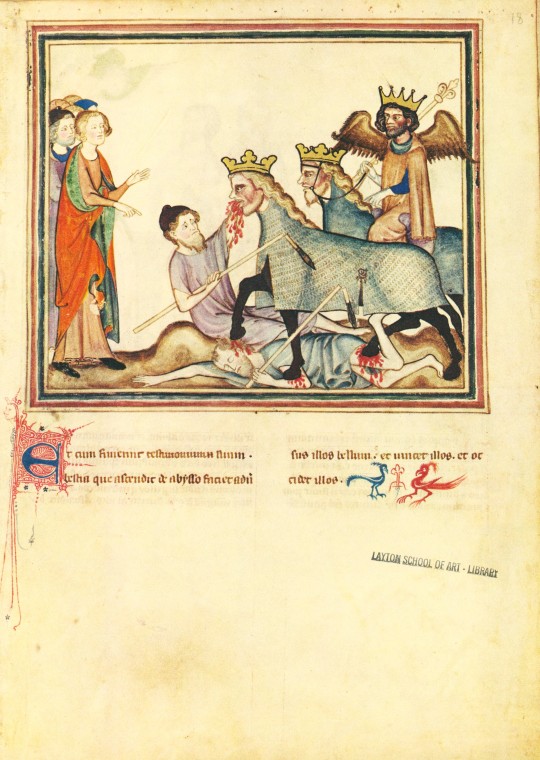
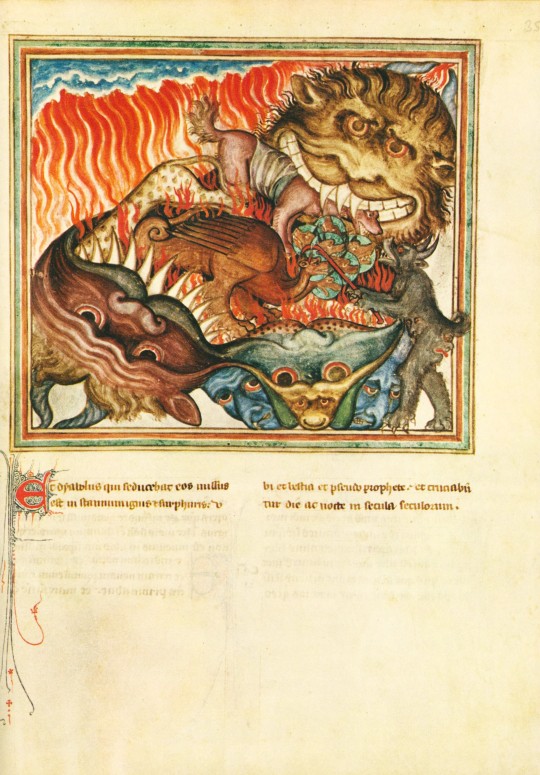

An Apocalyptic Manuscript Monday
This week we present our facsimile of the 14th-century Cloisters Apocalypse, published in 1971 by the Metropolitan Museum of Art in New York. As described in the introduction to the commentary about the manuscript, “[famine], pestilence, strife, and untimely death inspired apocalyptic fantasies and movements in Europe throughout the Middle Ages” (page 9), and this environmental influence led to the popularity of apocalyptic manuscripts like this French Apocalypse. Made in the 1330s for a Norman aristocratic couple, this manuscript has a few interesting details that set it apart from other Apocalypses, especially in relation to two other manuscripts in London (British Library, Add. Ms. 17333) and Paris (Bibliothèque Nationale, ms. Lat. 14410) that share similar formats, styles, and sequences with the Cloisters manuscript.
The first unique detail is the prefatory cycle of the life of Jesus in the introductory folios (1-2 verso). Since the Apocalypse of St. John the Divine (also known as the book of Revelation) was written by a titular St. John, prefatory cycles in Apocalypses usually consist of his life, rather than Christ’s. The other aspect of this manuscript that makes it distinct amongst its sister manuscripts is the addition of a dedication page on folio 38 verso. This page shows a man and woman kneeling in front of a tonsured saint and the Virgin and Child, respectively, representing the people for whom this manuscript was originally made for.

Interestingly, this manuscript also has multiple pages added to the original manuscript. Pasted on the inside front cover are handwritten provenance notes. The manuscript also did not originally include chapters and verses 16:14 through 20:3, and pages with this text were later added to the manuscript after the dedication page.
The materials used to create this manuscript include tempera, gold, silver, and ink on parchment with a later leather binding. If you are interested in seeing this unique Apocalypse manuscript, you can either use our facsimile, visit Gallery 13 of the Metropolitan Museum of Art’s Cloisters where the original is on display, or view their digital presentation of the manuscript.
View other posts on our facsimiles of illuminated manuscripts.
– Sarah S., Special Collections Graduate Intern
50 notes
·
View notes
Text

John Collier (English, 1850-1934)
The Sleeping Beauty
3K notes
·
View notes
Text
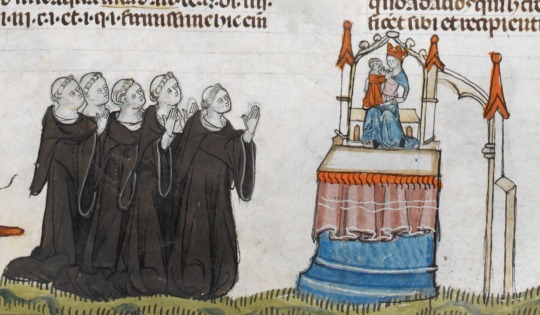
Monks praying before an altar with a statue of the Virgin Mary and Baby Jesus
Royal MS 10 E IV f.225r
Source: The British Library
50 notes
·
View notes
Text
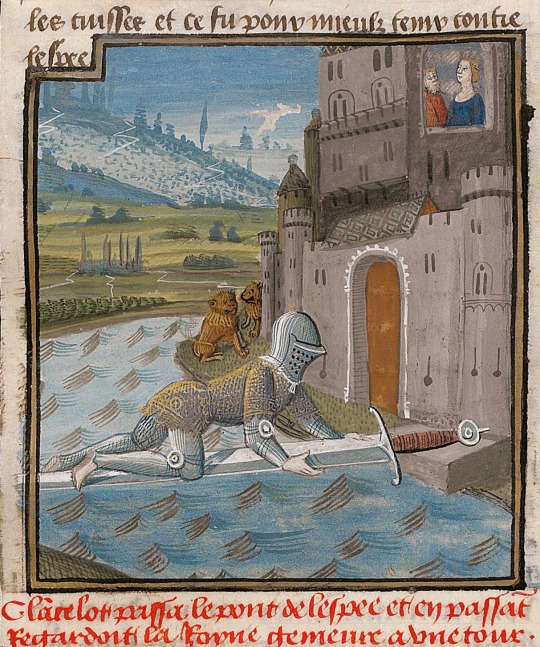
Lancelot crossing the Sword Bridge
Miniature illustration from a four-volume manuscript made for Jacques d'Armagnac, Duke of Nemours. Workshop of Évrard d'Espinques. Circa 1475.
474 notes
·
View notes
Text

The Beautiful Lady without Mercy by Walter Crane, 1865.
Context: depiction of a ballad by John Keats.
26 notes
·
View notes
Text
"Burginda’s letter is instructing the young man in his spiritual endeavours, and the contents of the (albeit short) letter reveal that she was highly educated and well-read. Written in a period that many still refer to erroneously as an intellectual ‘Dark Ages’, Burginda’s letter uses Greek words, utilises biblical exegesis, imitates Christian poetry like the fifth-century Psychomachia of Prudentius, and references both the sixth-century Italian poet Arator and the classical Roman poet Virgil. It also contains a reworking of a description of heaven found in a Latin poem from Africa that dates to c. 500. Burginda was clearly a very well-read intellectual.
This letter can be used as an example to refute many popular misconceptions about the early middle ages. The first misconception is that antique texts were neglected or unknown in this period. The second misconception is that medieval women were uneducated and unintellectual. The third misconception is that there was little or no intellectual transmission between Africa and Europe in this period. Burginda’s letter proves all these assumptions false. Not bad for two paragraphs of Latin."
480 notes
·
View notes
Text
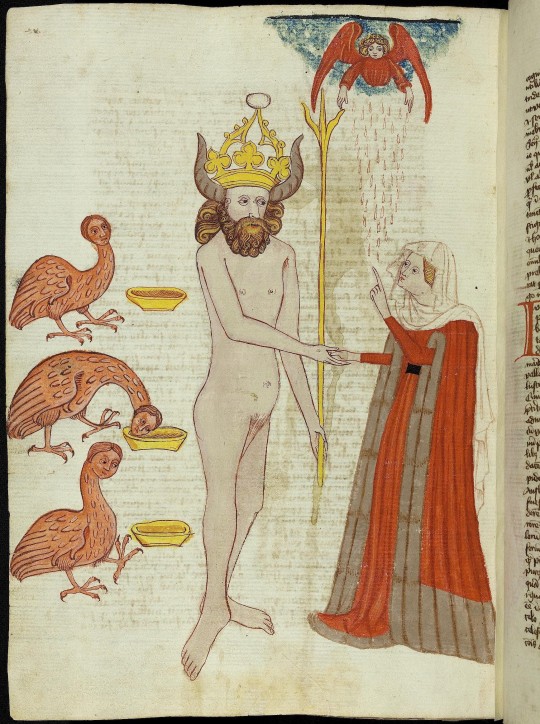
neptune, styx, and the harpies
from a copy of john ridewall's "fulgentius metaforalis" (?), bavaria, c. 1424
source: Vatican, Bibl. Apostolica Vaticana, Pal. lat. 1066, fol. 222v
256 notes
·
View notes
Text
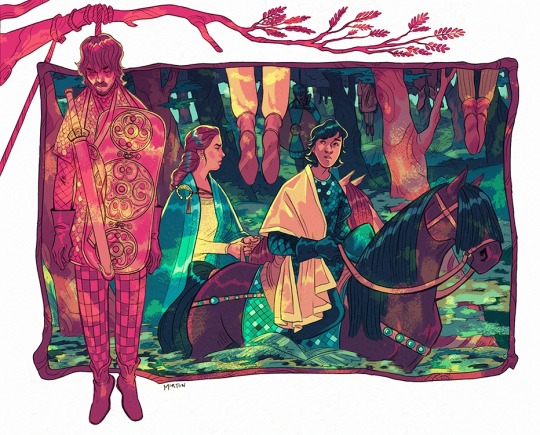
And then they took their horses and rode throughout a fair forest; and then they came to a plain, and saw where were many pavilions and tents, and a fair castle, and there was much smoke and great noise; and when they came near the siege Sir Beaumains espied upon great trees, as he rode, how there hung full goodly armed knights by the neck, and their shields about their necks with their swords, and gilt spurs upon their heels, and so there hung nigh a forty knights shamefully with full rich arms. Then Sir Beaumains abated his countenance and said, What meaneth this?
Fair sir, said the damosel, abate not your cheer for all this sight, for ye must courage yourself, or else ye be all shent, for all these knights came hither to this siege to rescue my sister Dame Lionesse, and when the Red Knight of the Red Launds had overcome them, he put them to this shameful death without mercy and pity. And in the same wise he will serve you but if you quit you the better.
Le Morte D'Arthur, Book 8 | Thomas Malory
march to camelot #4: monstrous
361 notes
·
View notes
Text


Front and rear cover of the Lindau Gospels, Carolingian, 9th century AD
from The Morgan Library and Museum
1K notes
·
View notes
Text


Wherever the king had to go, it did not care to be apart from him; it always went along with him. He could see well that it loved him.
On the king’s own bed he found the knight sleeping. The king ran to embrace him; more than a hundred times he hugs and kisses him.
some Bisclavret for you in the style of the Codex Manesse :)
236 notes
·
View notes
Text
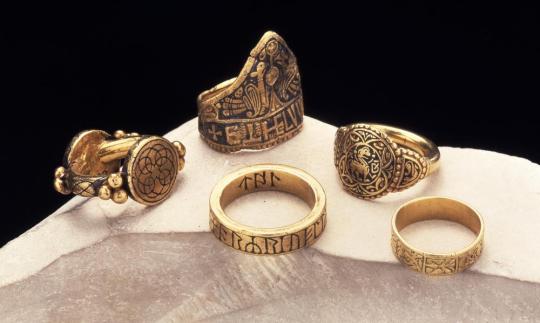
Gold rings from Anglo-Saxon England, 8th-10th century AD
from The British Museum
9K notes
·
View notes
Text

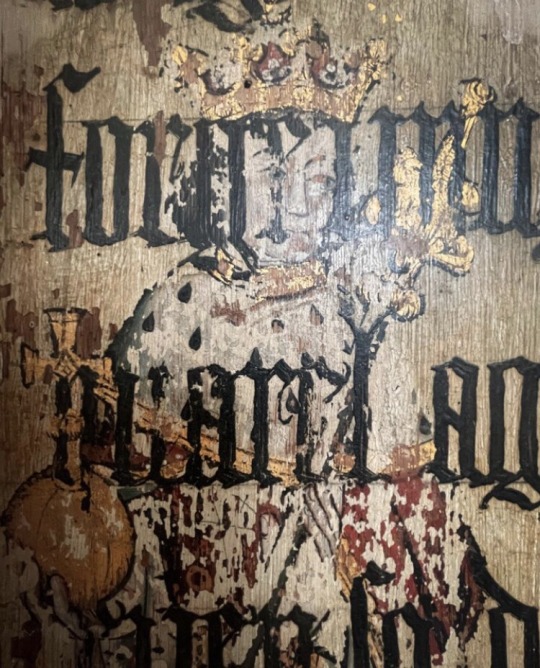

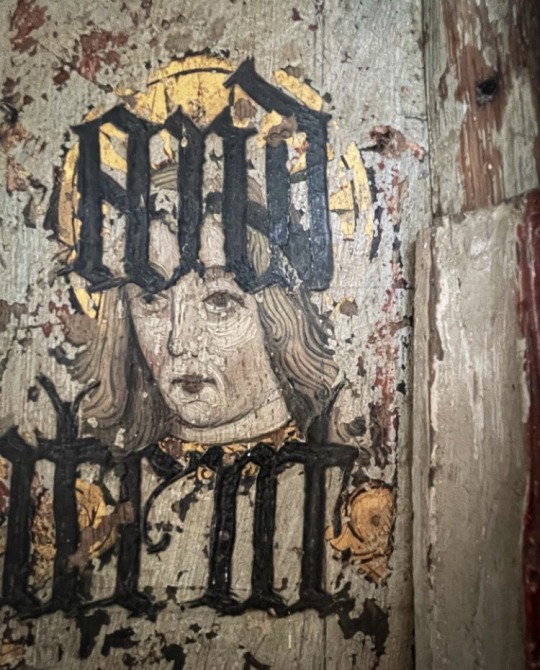
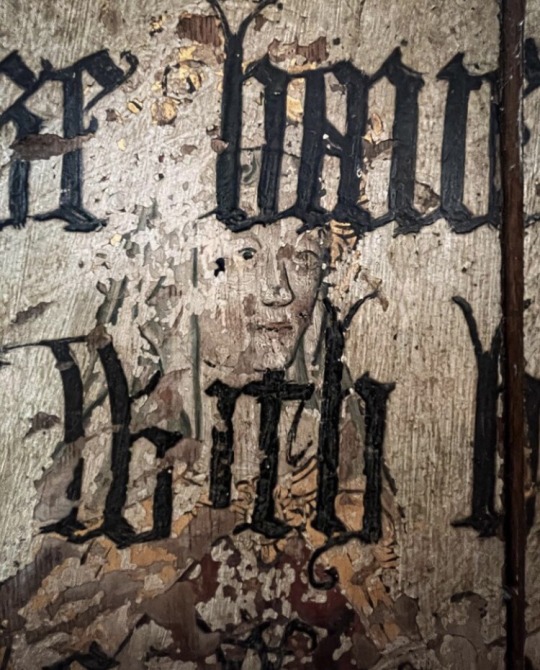
Panels representing the English reformation at Binham priory norfolk
100 notes
·
View notes
Text

Philosophia et septem artes liberales, "philosophy and the seven liberal arts." From the Hortus deliciarum of Herrad of Landsberg (12th century)
46 notes
·
View notes
Text

Crown of Margaret of York, England, dated 1468
from The Aachen Cathedral Treasury
847 notes
·
View notes

